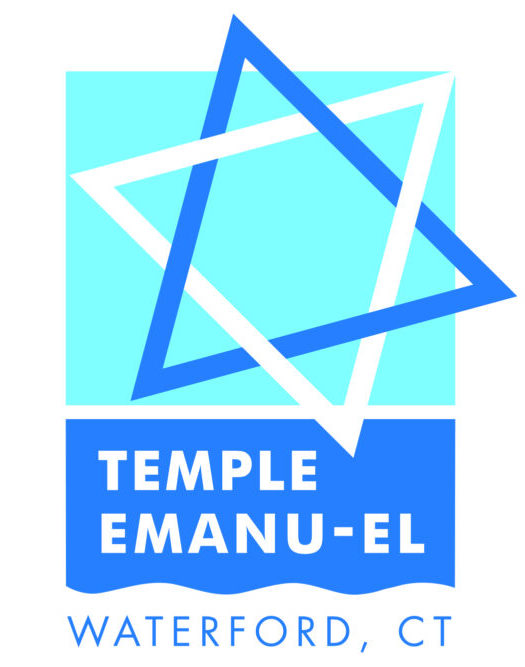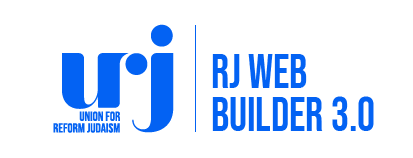From the Rabbi's Desk
| July/August 2025
Friends, As I write this article, Rabbi Polly and I are in New York City for a Jewish Welfare Board meeting of Jewish military and VA chaplains. The conference starts tomorrow, and Polly and I are wondering how many of our colleagues may be pulled away from the conference, given the situation in the Middle East. By the time this bulletin reaches your mailbox, the situation may have dramatically changed, so bear that in mind as you continue reading. One of the distinct memories from my childhood was the 444 days American hostages were held in Iran and their release on inauguration day in 1981. As I witness the war between Israel and Iran, I recall the Islamic revolution. It is clear that this war did not begin just a few weeks ago but has been waged for most of my life. Over the years, Iran has extended its influence into Syria, Lebanon, Iraq, the West Bank, and Gaza. Iran’s hatred of Israel, Jews, and the Western World has been so intense as to cross and perhaps even erase old lines dividing Shia and Sunni Islamic states, all to gain control from the Gulf to the Mediterranean and nearly surround Israel. So, despite having serious concerns about the Netanyahu government and even greater concerns about the political upheaval in the United States, I feel a sense of relief that there has finally been a serious check to Iran’s power. My hope and prayer is that the current war ends quickly, and along with it, Iran’s decades-long proxy war. My further hope and prayer is that this war paves the way for a 23-state solution that finally brings peace to the Middle East. I want to turn to things here at home now. A few weeks ago, we held our annual meeting. Several people commented that it was our best meeting in years. There were no controversial issues to discuss, and the financial report was all good news. How did this happen? It happened because we had a leadership team focused entirely on our mission of building a vibrant community through Reform Judaism. I want to thank the entire board, Sisterhood, all who participated on committees and helped make our many programs happen, and each and every supporter of the Temple. I especially want to thank our now Past-President, Armi Rowe. Being a Temple President is hard work. It takes a lot of energy, time, thoughtfulness, and patience. Armi has been a blessing within the Temple family for many years, which makes her expert leadership as President no surprise to anyone. She will be a hard act to follow, but we have another strong President coming in with John Murphy. John will enjoy the support of another strong and focused board. We should all be filled with anticipation for the year to come. Lastly, this is our double bulletin issue for the summer months. Since it is summer, don’t forget to stay hydrated, wear a hat, sunscreen, and especially bug spray. Mosquito bites are no joke. It may be summer, but there is still a lot going on at Temple Emanu-El. A special thanks to Sherry Barnes for organizing our lay-led summer services. And big thanks to all our summer service lay-leaders. Please take note of all the summer events in this bulletin. L’Shalom, |
Cantorial Notes
June
| July/August 2025
Happy Summer! At this time of year I always feel as if I have crossed the finish line and can slow down a bit before going into High Holy Day mode in August. Our Lay-led Shabbat Summer Services begin on Friday, July 4, with a BBQ dinner. Please make sure to RSVP to the Temple Emanu-El Office and let Roberta know you’ll be joining us.
Summer Shabbat Services will begin at 7:00 p.m. Here are the lay-leaders for these services: July 4 Sam and Roberta Winograd 11 Rabbi Aaron Rosenberg and Friends 18 Hazzan Sherry outdoor service 25 Emma Zelken, Susan Rosen, Jo Michaelson Aug. 1 Armi and Jonathan Rowe 8 Stan Bloustine, Norma Hollandersky, Barbara Senges 15 Hazzan Sherry outdoor service 22 Rabbi Polly Berg Thank you to all of our Shabbat Service leaders.
I love our Rosh Chodesh group! These programs will continue through the summer. Make sure to look for Sisterhood emails for these dates. Choir rehearsals for the High Holy Days will begin on August 7. All rehearsals are on Thursday evenings at 7:00. If you’ve thought about joining us, please consider doing it this summer. I’m always looking for male voices. Contact me if you are interested. Check out these links: Sue Horowitz Grateful (1) Grateful by Sue Horowitz – YouTube Julie Silver – Sim Shalom Sim Shalom Looking forward to having these two wonderful, caring musicians as our Artists in Residence in the Fall. Enjoy these two pieces, they are among my favorites. Here is one more link. I’m super excited to see Coldplay this summer with my son. It will be my first live concert at a stadium! This song is called Good Feelings. Hope your summer is filled with good feelings. GOOD FEELiNGS – Coldplay, Ayra Starr (Official Lyric Visualiser)
See you at Shabbat Summer Services. L’shalom,
|
Presidential Message
| July/August 2025
It is an honor and a privilege to share my first message with you as President of Temple Emanu-El. I want to begin by expressing my heartfelt gratitude to everyone who has entrusted me with this responsibility and to all who have dedicated their time, energy, and love to building and sustaining our vibrant community. Like many of you, my connection to Temple Emanu-El runs deep. Back in August of 1992, Barbara and I decided to raise our son, David, in the Jewish faith and enrolled him in the Temple Emanu-El preschool. Though we had no family in Connecticut, we quickly found one within this congregation. We were welcomed with open arms and warm smiles — and over the years, we built friendships that have become the foundation of our lives. Since then, I’ve converted to Judaism, served as Brotherhood President and Vice President of Fundraising, and even celebrated my own Bar Mitzvah in October of 1999. I still smile when I think about Marty Lazarus at the Waterford Post Office sorting Temple mail for “Murphy” — a name that stood out. And at David’s Bar Mitzvah in 2001, Barbara’s father, Walter, reflected that he never imagined his one grandchild having a Bar Mitzvah would have the last name Murphy. Life, as we know, takes us on beautiful and unexpected journeys. As I step into this role, I am mindful of the shoulders on which we stand: our presidents, clergy, staff, lay leaders, and the countless volunteers who have brought us to where we are today. I am humbled by their dedication and inspired to build upon their legacy. Looking ahead, I am excited about the opportunities before us. Together, we will continue to strengthen our congregation by:
In these times, our community reminds us that we are never alone — we stand together in celebration and in sorrow, in learning and in service. It is my hope that you continue to find meaning, friendship, and purpose at Temple Emanu-El. Please know that my door is always open — and for those who know me well, my cell phone number hasn’t changed since 1999 and won’t be changing anytime soon! I welcome your ideas, your participation, and your feedback. Thank you for the honor of serving as your President. I am excited to begin this new chapter together — and I look forward to working alongside each of you as we continue to build something meaningful, enduring, and deeply rooted in our shared values. B’Shalom,
|
Related Pages:
About Us
Our History
Our Leadership
Directions

